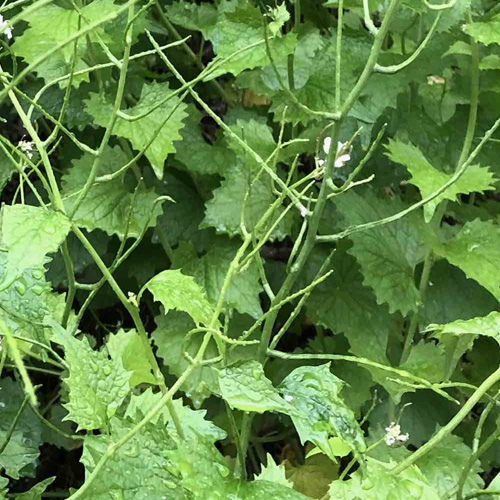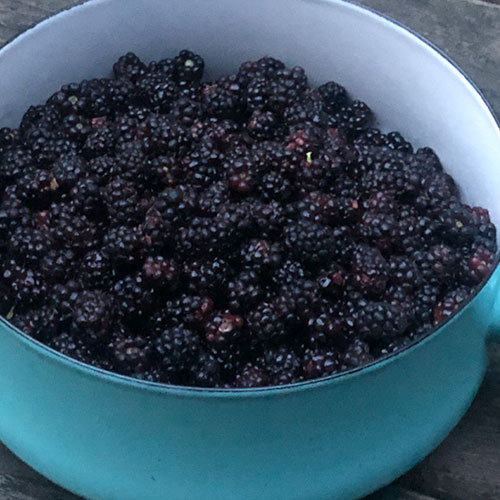One year, Halmoni came to stay with us in Peoria. My grandmother spoke good English, but her mannerisms were still very Korean. She spent the summer gardening in our backyard while singing hymns and encouraging all of us to eat more.
For supper one day, she proudly brought out a plate of kimchi. I ate a piece without a second thought, only to realize as I chewed that it had a different texture and taste than I was used to. “Halmoni,” I asked, “what vegetable did you use for this?”
“Weeds!” she said, with a big smile. I remembered seeing her carry a mound of dandelions inside and looked down at the dish with a mix of horror and curiosity.
Kimchi takes time. For people who make kimchi from scratch, it can take weeks, because it needs time to ferment. For us, it took about three hours—the distance between our house and our go-to Asian groceries in Chicagoland. We had an Asian grocery in Peoria, but it wasn’t as well-stocked or affordable as the Joong Boo Market in Glenview, the Woori Market in Schaumburg, or the Super H-Mart in Niles.
My grandmother spoke good English, but her mannerisms were still very Korean. She spent the summer gardening in our backyard while singing hymns and encouraging all of us to eat more.
Every few months, we’d stuff our car with enough Korean ingredients, snacks, and drinks to last us until our next trip to Chicago. We weren’t the only ones. At one point, the local Korean church coordinated group orders, importing myulchi (dried anchovies), dweonjang (fermented soybean paste), and gochugaru (chile flakes) for hungry expats, many of whom had come to town to work for Caterpillar.
Between trips, we came up with compromises and workarounds. Our neighbor told us that buchu (garlic chives) and kkaetnip (sesame leaves) grew well in his backyard, without much work. Soon after, they became staples in our kitchen, used in jeon (savory pancakes) and kimchi, and as wraps. But I’d never heard of dandelions in kimchi. I thought of dandelions as deep-rooted, annoyingly stubborn weeds.
Kimchi is a versatile banchan (side dish). It can be made with any vegetable. So I thought Halmoni was just being creative until I came across dandelion kimchi again, at Komo’s house in Schaumberg. My aunt proudly told me how she had pulled the weeds from my cousin’s backyard and made them into kimchi. And years later, my mom pointed to a cluster of dandelions poking out from a parking lot. She told me that they were actually very nutritious, and I brought up dandelion kimchi. She nodded like it was no big deal. It’s good for you, so why not? People make it in Korea.
We didn’t have a large Korean community in Peoria. There were few enough of us that we could all get together on the weekends for potlucks. I remember the dinner parties, when we’d cram into someone’s house. All the shoes would block the front door. The dads would play poker, the moms would catch up, and we kids had to find ways to entertain ourselves for hours. When I think of home now, I think of our summer barbecues, our lunar new year celebrations, and yashik (late night eating) with friends. Although we were few in number, we made a home in central Illinois.
Those dandelions did, too. A few dandelion species are native to North America, but the plants in most backyards, including ours, came over from Europe and Asia. Homesick immigrants helped them spread from coast to coast. After reading that origin story, I felt a new connection to dandelion kimchi. Maybe it’ll never have mass appeal, because of the stigma around eating weeds, but it’s more like me than I realized—from abroad and reconnecting with its roots in the Midwest.
Dandelion Kimchi (민들레 젙걸이)
This is an adjust-as-you-go recipe. My aunt shared approximate amounts. It makes a salty, spicy fresh—not fermented—kimchi, ready to eat as soon as it’s done. You can buy the dandelion greens at some stores, but where’s the fun in that? Be smart when harvesting dandelions, avoiding the sides of busy roads and other polluted places.
Ingredients
1 bunch dandelion greens
Garlic, minced, to taste
Green onion, minced, to taste
2 tbsp. gochugaru (Korean red chile flakes)
2 tbsp. fish sauce
Pinch of sugar
1 tbsp. roasted sesame seed
Preparation
Mix and eat immediately.




